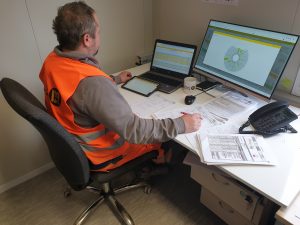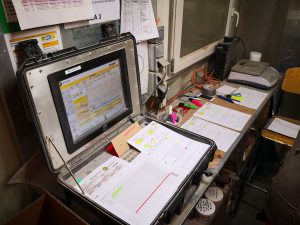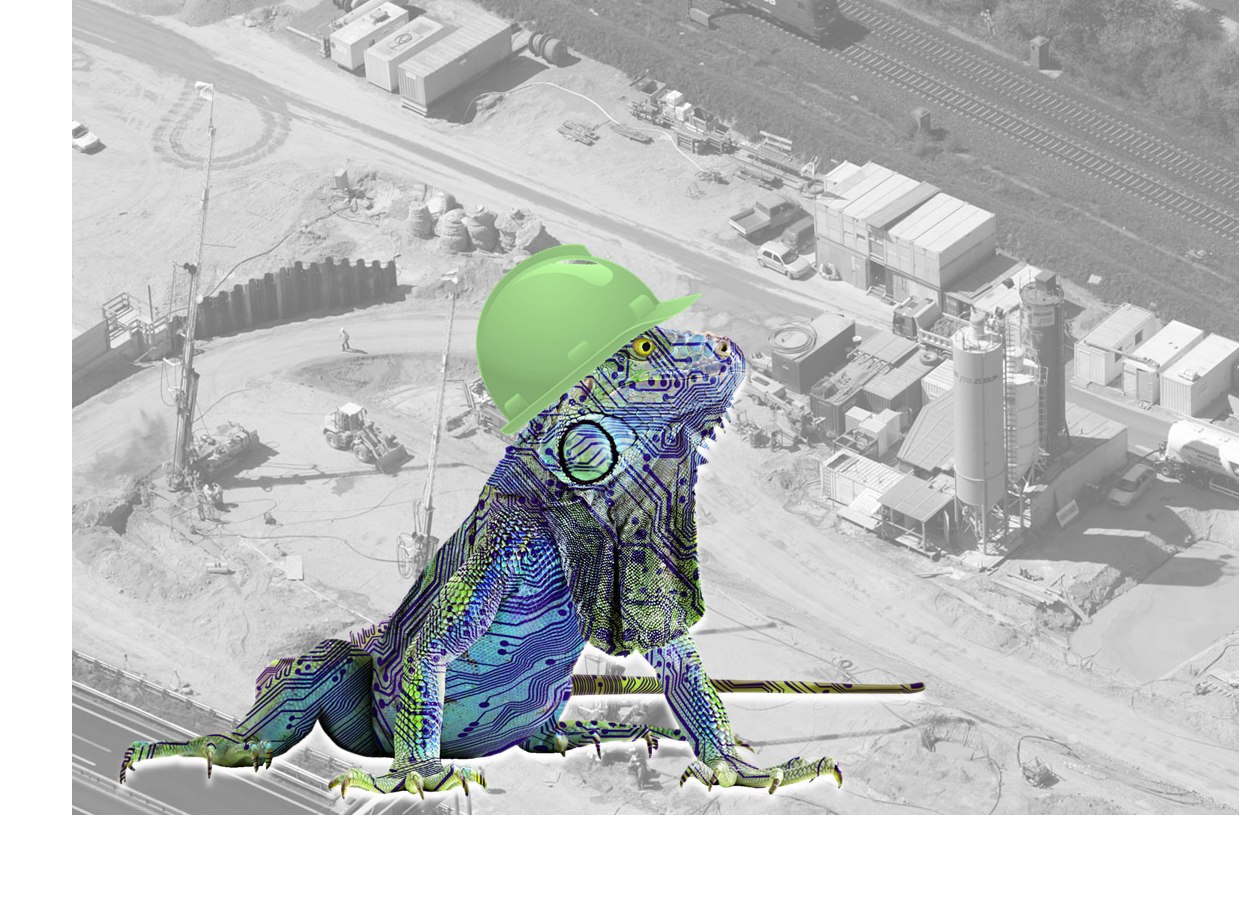Digitisation is advancing. In class rooms, in the medical industry and all the way to the fashion industry (Who doesn´t know Sewbo´s sewing robot? And please don´t tell me, you haven´t got the interactive jacket made by Google and Levi´s?) it is slowly becoming the norm in all areas of our lives, and does not even stop at special foundation engineering.
We talked about the improvement possibilities which can lead to the digital revolution in civil engineering with Flavio Piras, project manager at Renesco GmbH, section Marti Geotechnik responsible for the tunnel “Feuerbach” in Germany.
********
Digitisation is an important tool to improve current situations at construction sites and to prepare them for the future. Production data can be collected and processed digitally, visual and communicative interactions can be simplified and work instructions can be transmitted directly and without interim steps to modern terminals. Mistakes, as they inevitably happen with human interactions, can be widely eliminated. “Every single employee invests time to transfer information to the next point of contact” according to Piras. On a digitised construction site, this time could be saved. “Additionally, digitisation helps to react quicker to change request made by clients and to implement them.”
Be on-site
Central to an optimised construction site is Lean Management. It aims to coordinate and align all incurring activities and to avoid redundant jobs.
A key word in lean management is the so called . This term originates in the Japanese and essentially means “Be on-site”. It is all about the identification and elimination of inefficient processes by the supervising staff on the construction site. “This is the key principle of Toyota” says Piras. “Together with Volkswagen, they are global leaders in the automotive industry and both have introduced and successfully implemented lean management. Every single process has to analysed, documented, categorised as value-adding or non-value-adding and, the possibility of process digitisation has to be impugned.” The identification of inefficient and complex processes in the operative and administrative fields is simplified by digitisation. And here, the data management system SCALES comes into the game. All data that is being recorded already, can be analysed, interconnected and processed.
According to Piras, a flow efficient execution, for which in turn the digitisation is a requirement, is vital to introduce the lean principle to a construction site. “When data is at first manually documented but then needs to be transferred to software applications, there will not be an efficient process flow. Instead, it is tried to guarantee the production continuity. For this, a certain redundancy is imperative. Piras compares it to the human body: “You have to ask, what is necessary to keep the heart beating. These organs are to be provided for redundancy”.. However, this is not practiced everywhere in reality. “So if a pump is not working at the construction site of the tunnel “Feuerbach”, the crew stops and delays the whole production process.”
Entrance of the digitisation
Digitisation is an integral part of almost all improvement actions of construction procedures: from the interaction between the different stakeholders as well as between man and machine, to the visualisation of data and processes in graphs for the presentation on a macro and micro level of a construction site. Piras is convinced that the documentation, the assessment and in the end the management of a construction site would hardly be possible or not at all without possibilities.
“Considering the fact that we conduct around 120,000 injections in the tunnel “Feuerbach”, it is simply not possible anymore that we manually document everything in Excel-sheets for example. The digitisation helps us to eliminate this time-consuming work process. In the end, the data is ready for the administrative adaptation and only needs to be adapted and checked for the different purposes, or to transmit to clients.“ Automatic data transfer enables an accelerated handover of documents, and with this an overview of the injection activities in the tunnel can be provided as quick as possible.
“About five years ago, there was a delay of several days between the production and the handover of the data”, Piras remembers. “Here, digitisation has had a significant contribution to the improvement on the foreman and construction management level. Not only the contractor profits from this, but also the client. Transparency and the accelerated handover support a reliable and cooperative collaboration.”

Time is money, and that is not different in civil engineering. Through optimised construction projects, an additional profit is generated. But that is not the only reason for optimisation. The aim is also a technological development. “At the tunnel “Feuerbach” we try to set high requirements to advance a technical and digital development. By doing so, we hope to achieve a USP on the market”, Piras says. “The technical, operational and administrative optimisation is essential when it comes to marketability and the company´s success.”
Hindering obstacles
From a human perspective, however, you always come across obstacles. The older generation sometimes misses the acceptance of implementing new digital technologies, Piras said. The basic understanding of digital structures such as the networking of control computers, industrial routers and the Internet is simply not available. He is all the prouder of the generation-spanning team in Feuerbach, which is taking joint steps here.
Furthermore, the trust of the management in digital systems is way too high. “One must approach such systems more humbly. The output must first be verified by increased use in test phases. The results have to be checked. We as users need to provide more feedback to so that development can be driven by software developers. Digitisation also means a bit of systematisation. In terms of planning and execution, changes to planned definitions and processes (i.e. the title injection drilling) are frequently made without consequences of digitisation being assessed.“
The future should lie in digitising the civil engineering site in such a way that all data are digitally recorded, brought together and made accessible to all project participants in accordance with the BIM concept by contractors, planners and builders. It is incremental, that the digitisation includes all dimensions of a construction site (i.e. geometrics and masses, appointments, costs and the visualisation of construction bodies, geologies and building processes), as well as connects, visualises, and makes the respective platforms accessible to all stakeholders.

********
Guest author: Flavio Piras
The trained civil engineer gathered already during his master studies at the University of Karlsruhe, Germany first experience in tunnel construction as a student trainee at the Ed. Züblin AG and alter on at the Alpine Bau Deutschland AG. Since 2013, he is at the Marti Group, where he worked on the construction of hydropower plants at thrilling locations such as the Swiss mountains or in Sri Lanka. Since 2017, he is working in the construction-, and since 2018, in the project planning at the tunnel “Feuerbach”. If he is not occupied with tasks and requirements of the construction of the tunnel “Feuerbach”, he spends his time with sailing or winter sports – preferred in the Austrian alps of course.
We kindly thank Flavio Piras for his time, support and expertise and are looking forward to future collaborations!
If you want to know more about the construction of the tunnel “Feuerbach” you can find more information on the following pages:
https://de.wikipedia.org/wiki/Tunnel_Feuerbach
http://www.bahnprojekt-stuttgart-ulm.de/en/
